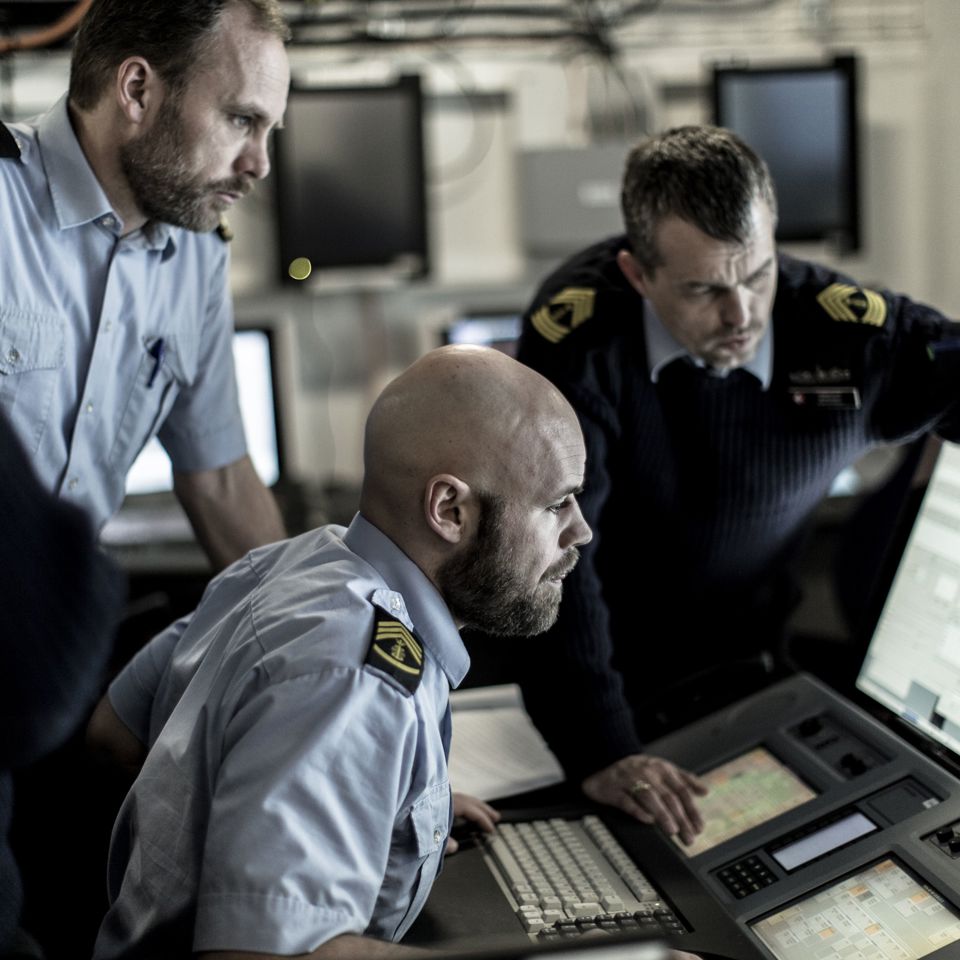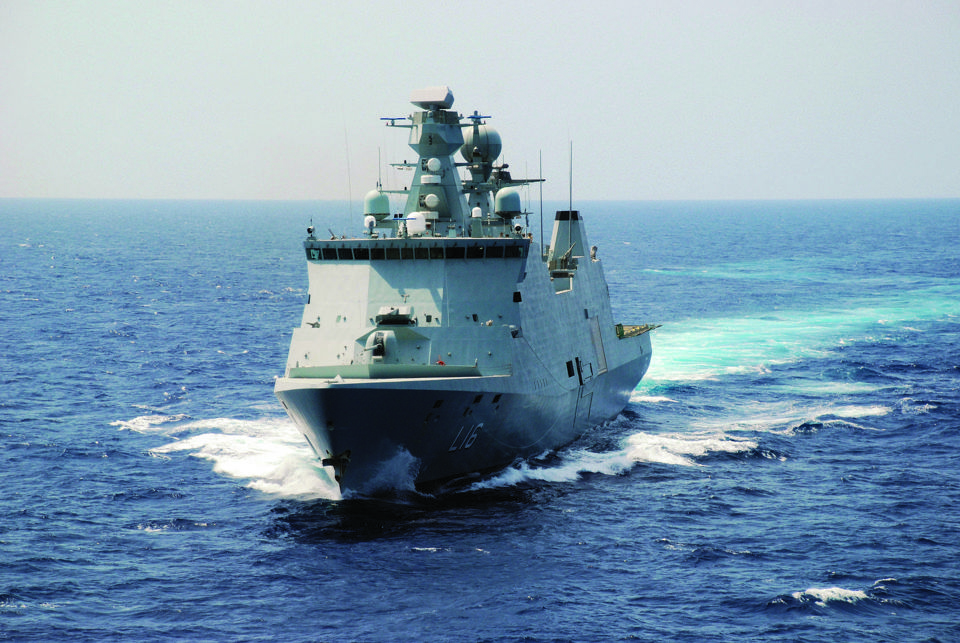Our partnership with Terma is one of respect and trust
The Danish Navy
For more than 30 years, the Royal Danish Navy has used Terma as their primary supplier of many different naval solutions varying from radar and sensor systems to effective self-protection products and entire command and control systems (C2).
Since 1989, the Danish Navy has sailed with our C-Flex command and control solution on their largest vessels. Today, C-Flex is in operation on the twelve largest vessels in the fleet, including the three ships in the frigate-class (Iver Huitfeldt).
We asked Michael Bredsgaard Krogh about how he sees the partnership with Terma. Bredsgaard Krogh heads the naval acquisition section at the Danish Ministry of Defence Acquisition and Logistics Organisation (DALO), and he and his staff have daily contact with
people from Terma.
“We have a close relationship with the people at Terma. A relationship, I find, relies on trust and respect for one-another. In my view, this kind of personal relationship between my staff, the operatives on our vessels, and the developers and engineers at Terma is critical for a prosperous partnership,” Bredsgaard Krogh says.
Knowing Who to Call
DALO and Terma have two agreements: a development agreement and a maintenance agreement. According to Bredsgaard Krogh, the latter one makes it easier to keep the Danish fleet up to date. The agreement includes a so-called “integration responsibility,” which simply means that any problem with any of the C-Flex vessels is Terma’s problem.
In other words, Terma holds the responsibility for the entire system to work. And we are always the first people to investigate an issue, fix it, or point out the third-party system causing the problem.
On a battleship, the key challenge is to make complex systems communicate with each other. The role of the C-Flex system as an integrator between external data sources, intricate sensors, and compound weapons systems often makes the C2 system the first place where an issue is detected.
It makes sense that Terma is responsible for investigating the root cause of any issue onboard, as the investigation often begins in C-Flex itself

"For us, the integration responsibility is very reassuring, because we always know who to call. And if Terma’s investigation finds that the cause of the issue is not their C2 systems or any of their products onboard, they are responsible for creating the documentation we need when contacting our other suppliers"
Michael Bredsgaard Krogh
Head of the naval acquisition at the Danish Ministry of Defence Acquisition and Logistics Organisation (DALO)
Effective Collaboration Yields Better System Development
The other agreement between DALO and Terma is concerned with developing new capabilities and functions for C-Flex. This ensures that command-and-control systems are always ready to support the operations and missions the Danish Navy participates in.
“In practice, we try to put operatives and DALO employees in the same room with engineers from Terma. This ensures the best and most precise transfer of information and gives the developers a better understanding of operational needs,” Bredsgaard Krogh explains.
The development process for a new function begins with the briefing. After, we create a first draft of the specifications for the function. The draft is then refined within a feedback loop between the three parties involved until the specifications match operational needs and until everyone involved has a clear and mutual understanding of the functionality objectives and the solution.
“Dialogue is essential in all phases of development. When we have the specifications right and we place the actual order, close dialogue and collaboration with developers is still crucial for the end-product to be successful."
To ensure a continuously productive dialogue, we set up workshops and status meetings on a regular basis with participants from both DALO and the navy. In our experience, meeting face-to-face is the only way to make sure our solutions deliver according to the officers’ expectations.
C-Flex: Closest to the Battle
Different levels of command require different information. For any battle information system to contribute to the chain of command, it needs to integrate seamlessly with other systems, including third party ones.
C-Flex is designed to be the system closest to battle and to contribute with situational awareness and decision support on the battleships. C-Flex ties the ship’s sensory inputs together and is usually the first system to intercept incoming threats and inform officers. Through
C-Flex, officers can take immediate action, control weaponry, and choose an appropriate response.
However, C-Flex not only assists commanding officers and operatives, but also automatically keeps other key decision makers informed by sharing available information with commanders at headquarters and in other allied units.
“Although our operatives always have high expectations for the system and can always come up with wishes for further capabilities and new functions, C-Flex has been developed to fulfill our operational needs and is fully capable of handling the C2 tasks of our operations,” Bredsgaard Krogh says.

The Future of Naval Combat
Part of delivering state-of-the-art systems and products for military units involves anticipating the threats of tomorrow. By listening closely to our customers in both Denmark and abroad, we possess an understanding of what the future of battle will look like.
Not surprisingly, one of the key components of contemporary and future naval C2 systems lies in interoperability across forces and nations. Michael Bredsgaard Krogh explains:
“Interoperability is clearly the way to go right now. We need battle information systems that communicate smoothly and fluently with the foreign systems of our coalition partners. Only by harmonizing systems even more can we ensure that international joint forces can operate as
one unified force.”
At Terma, the fundamental of interoperability is at the heart of our business — and always has been. With our roots in integrating data inputs and presenting them in a unified and user-friendly manner, our training in creating systems with full interoperability began decades ago.
Today, we participate in international forums, including NATOspecific ones, and help shape the standards for international, secure data exchange between allied nations. And we agree with Michael Bredsgaard Krogh:
"The golden moment of acquiring full interoperability is now. The capability has never seen so much interest, and in my opinion, the allied nations are ready. We need full interoperability to prevail in the battles of the future.“





